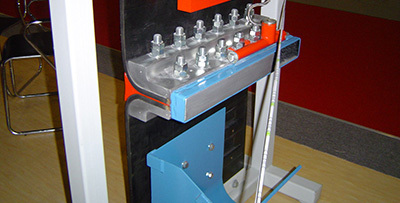News Center
Hezi technology focuses on the research and development of "rapid seamless conveyor belt joint sleeve" innovative technology project

NEWS CENTER

News Details
Understanding Belt Fasteners for Rubber Belts: An Essential Guide
Release time:
2024-12-24
This article explores the importance of belt fasteners in rubber belts, focusing on their functionality, types, and applications in the chemical and rubber industries. Discover how these components co
Rubber belts are crucial components in a wide range of industries, particularly in the chemical sector, where they are used for transporting materials and products efficiently. One of the key elements that enhance the performance of these rubber belts is the belt fastener. Understanding the role of belt fasteners can help you appreciate their significance in maintaining the integrity and longevity of rubber belts.
Belt fasteners are devices designed to connect the ends of a rubber belt, creating a continuous loop. This connection is vital for the belt's functionality, as it allows for seamless operation in various machinery and conveyors. The choice of the right belt fastener can significantly impact the efficiency of a rubber belt, affecting not just the speed of operation but also the safety and reliability of the entire system.
There are several types of belt fasteners available, each tailored to specific applications and requirements. For instance, mechanical fasteners, such as clamps and hinge pins, offer quick and easy installation and can be adjusted as needed. These fasteners are particularly useful in environments where the belt may need frequent adjustments or replacements.
In contrast, vulcanized fasteners provide a more permanent solution. This method involves chemically bonding the ends of the rubber belt, resulting in a seamless connection that enhances durability. This type of fastener is ideal for heavy-duty applications where the belt is subjected to high stress and wear.
Choosing the correct belt fastener also involves considering the operating environment. Factors such as temperature, humidity, and exposure to chemicals can influence the performance and lifespan of both the rubber belt and its fastener. For example, in chemical processing plants, it is essential to select fasteners that can withstand harsh chemicals without degrading.
Moreover, proper installation and maintenance of belt fasteners are critical. Regular inspections can help identify signs of wear or damage, allowing for timely replacements that prevent costly downtime. Ensuring that the belt is properly tensioned and aligned can also extend the lifespan of the fastener and the rubber belt itself.
In summary, belt fasteners play a vital role in the functionality of rubber belts, particularly in the chemical industry. Their selection, installation, and maintenance are crucial for ensuring that rubber belts operate efficiently and safely. By understanding the different types of belt fasteners and their applications, you can make informed decisions that enhance the performance and reliability of your rubber belt systems.
Belt fasteners are devices designed to connect the ends of a rubber belt, creating a continuous loop. This connection is vital for the belt's functionality, as it allows for seamless operation in various machinery and conveyors. The choice of the right belt fastener can significantly impact the efficiency of a rubber belt, affecting not just the speed of operation but also the safety and reliability of the entire system.
There are several types of belt fasteners available, each tailored to specific applications and requirements. For instance, mechanical fasteners, such as clamps and hinge pins, offer quick and easy installation and can be adjusted as needed. These fasteners are particularly useful in environments where the belt may need frequent adjustments or replacements.
In contrast, vulcanized fasteners provide a more permanent solution. This method involves chemically bonding the ends of the rubber belt, resulting in a seamless connection that enhances durability. This type of fastener is ideal for heavy-duty applications where the belt is subjected to high stress and wear.
Choosing the correct belt fastener also involves considering the operating environment. Factors such as temperature, humidity, and exposure to chemicals can influence the performance and lifespan of both the rubber belt and its fastener. For example, in chemical processing plants, it is essential to select fasteners that can withstand harsh chemicals without degrading.
Moreover, proper installation and maintenance of belt fasteners are critical. Regular inspections can help identify signs of wear or damage, allowing for timely replacements that prevent costly downtime. Ensuring that the belt is properly tensioned and aligned can also extend the lifespan of the fastener and the rubber belt itself.
In summary, belt fasteners play a vital role in the functionality of rubber belts, particularly in the chemical industry. Their selection, installation, and maintenance are crucial for ensuring that rubber belts operate efficiently and safely. By understanding the different types of belt fasteners and their applications, you can make informed decisions that enhance the performance and reliability of your rubber belt systems.

Recommend News





























